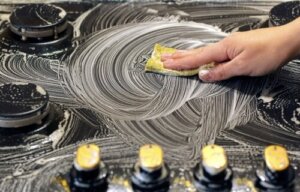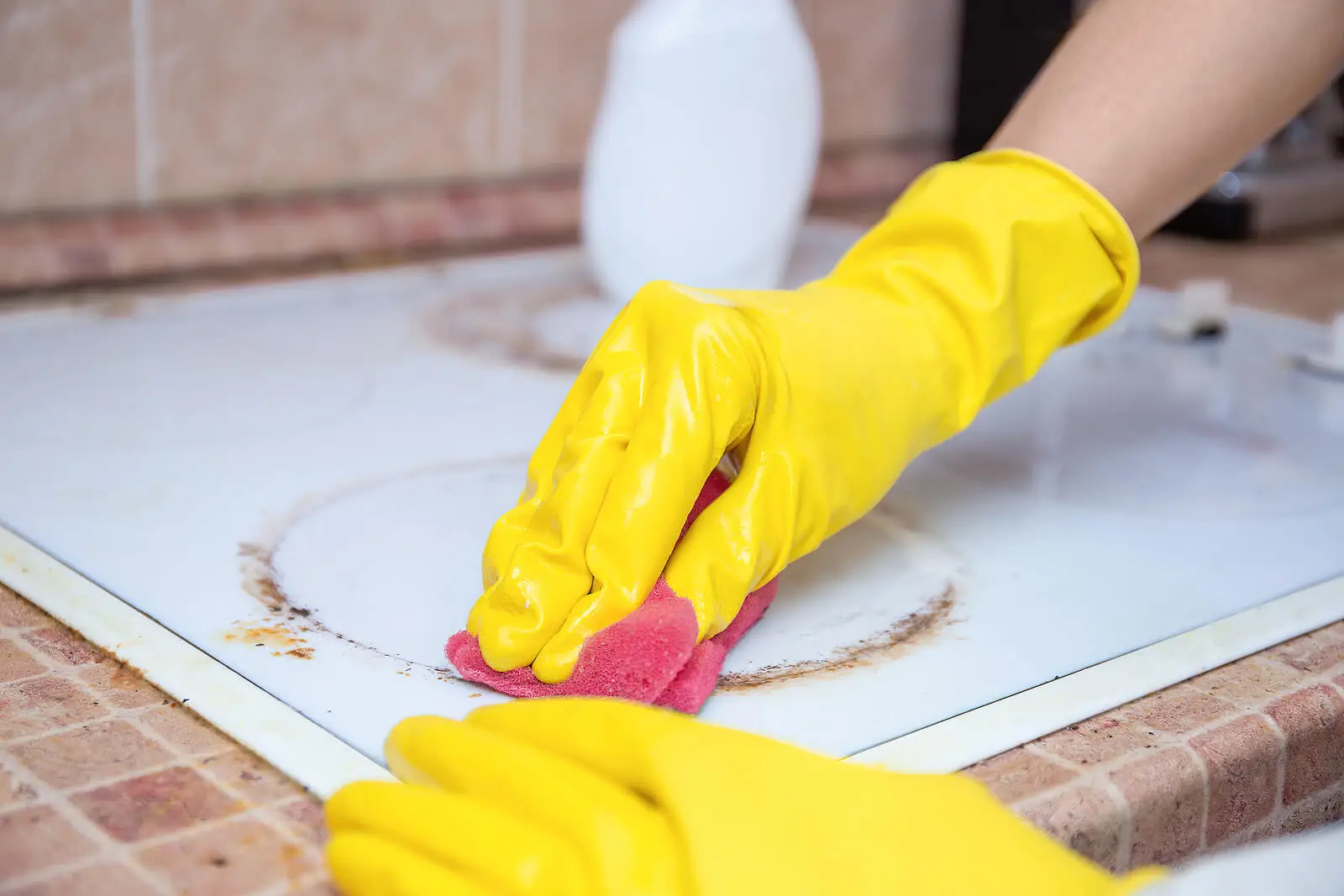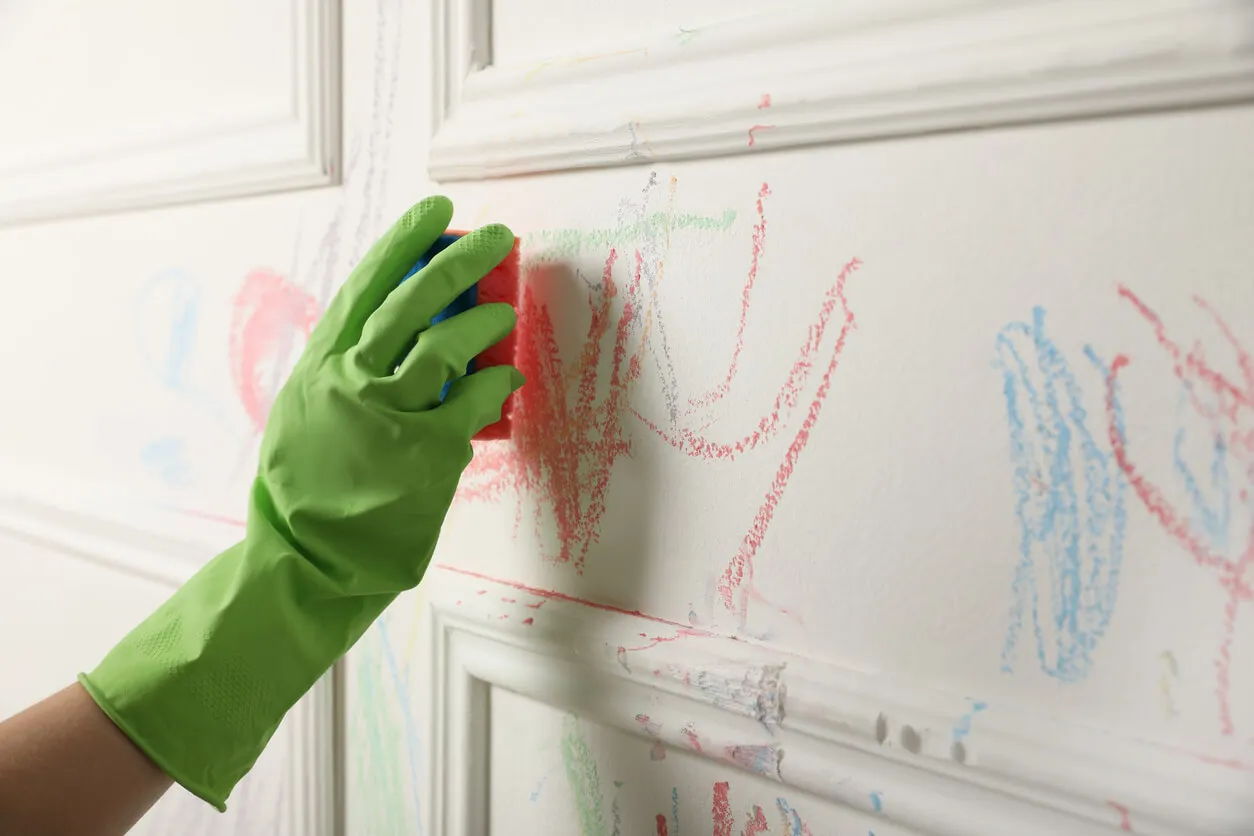White Stone, The Trendy Product for Home Cleaning

White stone has become a trendy product for household cleaning. It’s credited with several benefits, such as removing dirt from any surface. In fact, some are even using it to clean bathrooms, pans, oven interiors, and other difficult areas.
Do you want to know the best part? It doesn’t affect the health of the skin or the environment. That’s because its ingredients are natural. These stones basically contain white clay, baking soda, and glycerin. In this article, we’ll tell you more about its uses and properties.
What is white stone and what is it used for?
White stone is a cleaning product obtained from 100% organic ingredients. It’s odorless and has abrasive properties, so it can be used to clean a wide variety of surfaces in the home. In fact, it’s used to remove dirt, degrease, and polish without making a major effort.
White stone is composed of white clay, baking soda, water, vegetable glycerin, and sometimes soap. A light application is enough to obtain noticeable results during household chores. Hence, it’s a very trendy product.
Despite its name, it has the consistency of a paste, which is applied to the surface to be cleaned. It’s often rubbed on with the help of a sponge.
In addition to all this, white stone is an environmentally friendly solution to replace aggressive chemicals during cleaning. The Spanish newspaper El País describes it as a “multi-purpose cleaner”, as it can be used in bathrooms, living rooms, terraces, swimming pools, and garages, among other spaces.

We think you may also enjoy reading this article: Spring Cleaning: A Step-by-step Guide for a Spotless Home
Where can you clean with white stone?
To go into detail, the surfaces that can be cleaned with white stone are as follows:
- The toilet or toilet bowl, as well as the bathtub
- Kitchen, bathroom, or pool tiles
- Rust and mildew on faucet parts
- Window panes
- Plastic garden furniture
- Appliances, such as microwaves and toasters
- Limescale build-up in the washing machine and dishwasher
- Grease in the oven and kitchen hood
- Joints in the walls
- Enameled surfaces
- Resin, PVC, or acrylic stains
- The underside of pans and pots
- Metals (including silver and stainless steel)
- The rubber of sports shoes
- As a degreaser on vehicle parts
How to use white stone for cleaning
The white stone is very easy to use; all you need is a two-layer sponge or a scouring pad and a little water. If you wish, you can make a natural luffa sponge.
Follow these steps:
- Wet the sponge or cleaning cloth.
- Then, rub with the white stone, until you get foam.
- Then, apply the product on the surface to be cleaned.
- Remove the excess with a little water or a damp, clean cloth.
- In the case of joints, like those in tiles, an old toothbrush can be used.
- Repeat if necessary, although it usually works on the first pass; it all depends on the surface or object, and how much dirt is adhered.
- To brighten and make the cleaning job even more noticeable, you can rub it with a microfiber cloth at the end.
Although the white stone is effective by itself, it is also possible to complement the process with some grease remover, a polish, or a touch of bleach to disinfect.
Like this article? You may also like to read: Try These 10 Ideas for Using Lemon in Household Cleaning
The advantages of white stones for household cleaning
Employing white stone during household cleaning tasks has some advantages. First of all, it facilitates the removal of dust and grease, even on surfaces where they adhere strongly. A sponge and water are all that are needed to complete the process.
Furthermore, its combination of ingredients is non-toxic, so the skin and respiratory tract are not at risk, as is the case with conventional cleaning agents. This is also an advantage in terms of environmental care.
Among other things, it is non-corrosive, allows stains to be removed without causing scratches on the surface, and helps to polish dull metals so that they regain their shine. In fact, some claim that it even has antimicrobial qualities that form a protective layer to prevent the proliferation of bacteria on surfaces.

The disadvantages
On the other hand, among the disadvantages of the product are the following:
- It doesn’t remove burnt-on stains on pots or pans.
- White stone is less effective on porous surfaces, such as non-washable walls, wood, or leather.
- Due to its consistency, traces of the product may remain on the surface.
- It’s not recommended for delicate parts.
- It’s more expensive than a conventional cleaner.
White stone, an ally for domestic cleaning
Sometimes, cleaning time in the home can be a real nightmare, especially when there is too much accumulated dirt. However, products such as white stone can be a solution.
Even though all its properties remain to be demonstrated, there are many positive statements from satisfied users. The most interesting thing is that this is a versatile, multi-purpose product that’s safe to use and relatively easy to acquire. So, are you going to give it a try?
All cited sources were thoroughly reviewed by our team to ensure their quality, reliability, currency, and validity. The bibliography of this article was considered reliable and of academic or scientific accuracy.
- Da Silva-Valenzuela, M.G., De Souza Carvalho, F.M., & Valenzuela-Diaz, F.R. (2014). Characterization of clays using for formulations of detergents (pp. 395–399). Mingming Characterization of Minerals, Metals, and Materials. Switzerland: Springer Nature.
- Ghosh, B. (2022). Clay-based cleaners and disinfectants: A back to basic approach for cleanliness and sanitization. Back to Basics: A Multidisciplinary Approach to Organic Living and Waste Management (pp. 45-74). Calcuta, India: Jogamaya Devi College Interdisciplinary. Volume 3.
- Piedra blanca: el producto de limpieza ‘mágico’ que termina con la suciedad incrustada en todo tipo de superficies y materiales. (2021). EL PAÍS. Recuperado el 27 de febrero de 2023 de https://elpais.com/escaparate/2021-09-17/piedra-blanca-el-producto-de-limpieza-magico-que-termina-con-la-suciedad-incrustada-en-todo-tipo-de-superficies-y-materiales.html
-
Abrams EM. Cleaning products and asthma risk: a potentially important public health concern. CMAJ. 2020 Feb 18;192(7):E164-E165. doi: 10.1503/cmaj.200025. PMID: 32071109; PMCID: PMC7030883.
- Wolkoff P, Schneider T, Kildesø J, Degerth R, Jaroszewski M, Schunk H. Risk in cleaning: chemical and physical exposure. Sci Total Environ. 1998 Apr 23;215(1-2):135-56. doi: 10.1016/s0048-9697(98)00110-7. PMID: 9599458.
This text is provided for informational purposes only and does not replace consultation with a professional. If in doubt, consult your specialist.








